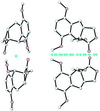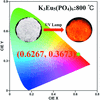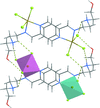issue contents
July 2019 issue

Cover illustration: An intuitive method is presented for detecting pseudosymmetries in Z' > 1 cases as a complement to well-proven strategies already available in the literature. It is based in the simple idea that the mid-points between equivalent atoms in symmetrically related molecules are disposed according to simple well-known patterns, which are easily recognizable by optical inspection. A number of Z' = 4 cases in the literature are analyzed, which allows some of the potentialities of the method to be revealed. See Baggio [Acta Cryst. (2019), C75, 837-850].
scientific commentaries


feature articles
research papers






 access
access



































 journal menu
journal menu









































